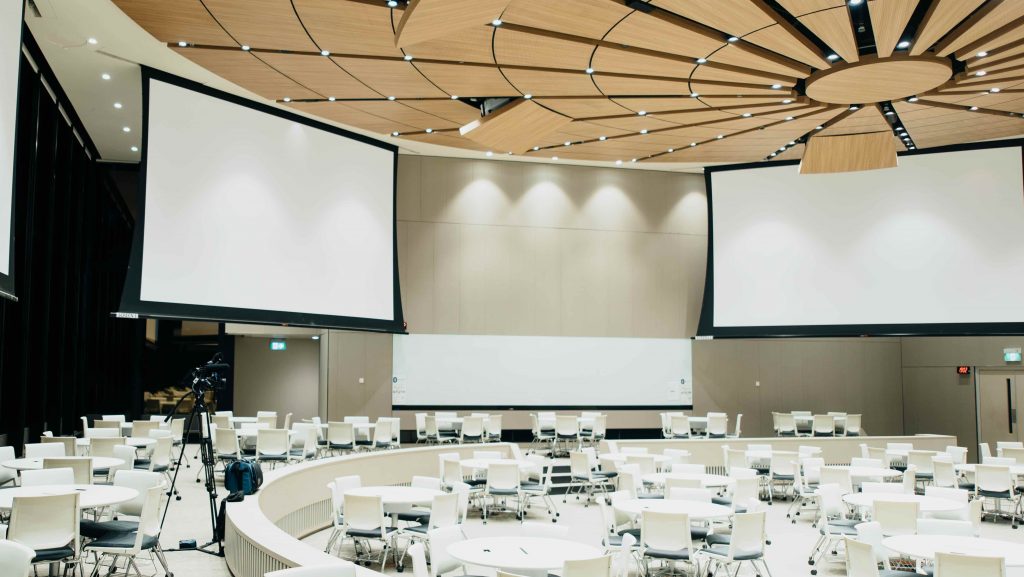As we consider the many types of educational technology-related conferences that masters and doctoral students might want to attend – as well as submit proposals to – there are variety of factors that we need to keep in mind.
Each year, EdSurge produces two conference calendars related to ed tech for both K-12 and higher ed. While they do ask for your contact information in order to send you additional email updates, those updates, too, are useful and access to the conference calendar is very much worth it. So, just to have a sense of the annual calendar for major conferences, that is a good place to start.
As you prepare to submit a paper/presentation for your first conference, you can look to the conference website at a point about a year to six months ahead of time to view the call for proposals (or, in the edu-jargon, “the CFP”). As you think about what conferences you might choose to present at, a few of the following questions can help guide your writing process and, in turn, help you make an informed decision about which conferences to attend.
What Kind of Ed Tech Conference?
First, when is the proposal due and what is the audience expecting? One of the great things about the EdSurge calendars is that they create very clear distinctions amongst different types of ed tech conferences: those focused mostly on IT and business aspects, those focused broadly on teaching and learning, and those focused on specialty communities, usually by topic or region. By understanding what your audience is expecting in the type of conference presentation you will create, you can choose the appropriate type of conference more wisely.
Should you choose to go to a more practitioner-oriented conference, such as the International Society for Technology in Education annual convention, you may find that there are strands for presenting research, but most conference-goers are there to get hands-on experience trying out new tools and teaching strategies. Therefore, you may want to submit a proposal that, in ISTE’s terms, would be more of an “Explore and Create” (interactive, workshop style) session as compared to a “Listen and Learn” (delivering a paper/presentation). Of course, you can still put in a session more focused on your research, but I enjoy presenting at conferences like ISTE with the goal of teaching and learning in mind.
Should you choose to go to a more researcher-oriented conference, such as Society for Information Technology and Teacher Education annual conference, you are more likely to be sharing your research with other interested scholars. These types of conferences typically have a number of formats that you can pursue including “full” and “brief” papers, “panel” and “roundtable” discussions, or “poster” sessions. Some are even offering virtual options for presentation delivery. Again, depending on your preference, you may choose to go it alone and submit something that would be condensed into a larger panel or roundtable session, though I would encourage you to consider how you might team with colleagues to submit a coherent, connected session with a full slate of presenters.
No matter which way you go with your proposal, Grad Hacker has “5 Steps to a Killer Conference Proposal” worth reviewing.
How to Pay for the Conference
Second, cost is always a factor. While there are no perfect solutions, most professional organizations offer a student discount, so take advantage of that. Also, see if the organization itself offers any kinds of graduate student travel grants. CMU’s College of Education does offer a few options for help, too, including the Student Vending Funds and a number of scholarships. Grad Hacker, again, has some additional tips on saving money during conference travel. Finally, check with your advisor — s/he may have access to travel funds that could support you, too.
Finally, the Big Question: What’s Next?
Having done all this work, and having attended the conference itself, perhaps the biggest question is what to do next. There can often be a feeling of letdown after conference, and the trick is to keep your momentum moving forward. While certainly you could share your work in the conference proceedings, you might also consider trying to rework your conference proposal – as well as the feedback you got from the audience – into a journal piece that may gain a wider audience.
In this sense, I always think of the conference proposal (and presentation) as a test run for trying out new ideas. If you are open and honest with your audience, seeking feedback from them on your work, chances are you’ll probably get some compliments and some criticisms. Then, on the way back home, the trick is to immediately capitalize on those ideas and to think about how you can move them into a full-fledged article.
Again, Grad Hacker to the rescue with a great entry on how to move through that process.
No matter what conference you choose to attend – local, regional, national, or international – your goal as a grad student is to get yourself (and your ideas) out there. Only then will you be able to connect with other like-minded professionals and begin to build your network.
So, I encourage you to again take at the EdSurge K-12 and higher ed conference calendars, look a few months ahead, and figure out where you can submit a proposal to share your learning with the broader ed tech community.
Photo by chuttersnap on Unsplash

This work is licensed under a Creative Commons Attribution-NonCommercial-ShareAlike 4.0 International License.

